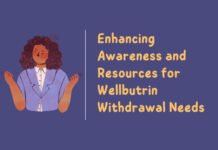
In the relentless pace of modern life, finding moments of serenity becomes increasingly crucial. Green therapy, also known as ecotherapy or nature therapy, offers a remedy by tapping into the therapeutic benefits of connecting with the natural world. This comprehensive guide explores the various facets of green therapy, its scientific backing, the activities involved, and its profound impact on physical, mental, and social well-being.
1. Understanding Green Therapy

Green therapy is a holistic approach to well-being involving intentionally engaging with nature. It encompasses a range of activities, from leisurely walks in the park to more involved practices like gardening, visiting beaches, and wilderness therapy.
2. The Science Behind Green Therapy

Cortisol and Stress Regulation
Living in urban areas with green spaces has been linked to increased cortisol production, a hormone crucial for stress regulation. Greenery in our surroundings helps mitigate the effects of a hectic lifestyle.
White Blood Cells and Immune Boosting
Spending time in natural settings increases white blood cell production, strengthening the immune system. Green therapy becomes a natural booster for the overall body to stay healthy.
Mindfulness in Nature
While mindfulness can be practiced anywhere, it reaches new heights when conducted in natural surroundings. The calming effect of nature enhances the efficacy of mindfulness practices.
3. Forms of Green Therapy

Hiking, Walking, and More
Activities like hiking, running in the park, or even rowing on a lake fall under the umbrella of green therapy. These activities cater to different preferences and fitness levels.
The Therapeutic Touch of Gardening
As the National Health Service in the UK prescribes, Gardening offers a unique and specific interaction with the Earth. It is a hands-on approach to green therapy that many find rewarding.
4. The Art of Living in the Moment

Wisdom from Nature
The late mindfulness guru Thich Nhat Hanh emphasized the importance of living in the moment. With its constant presentness, nature becomes a guide to understanding the essence of mindfulness.
5. Activating Your Senses

Examining Nature’s Details
It prompts individuals to engage their senses entirely. Whether it’s feeling the texture of a leaf or tasting herbs fresh from the garden, the sensory experience becomes a form of therapeutic engagement.
Weeding as Meditation
The act of weeding demands a meditative level of concentration. It becomes a mindful practice that fosters mental clarity and focus.
6. Connecting with Others

Combatting Loneliness
Loneliness is a significant driver of mental health issues. Green therapy prescriptions often involve outdoor activities with others, fostering a sense of community and connection.
The World Health Organization’s Perspective
According to the World Health Organization, complete well-being involves proper health and wellness care. It aligns with this comprehensive view of health.
7. Soil as an Anti-Depressant

The Surprising Benefits of Soil
Engaging with soil triggers serotonin production in the brain, acting as a natural anti-depressant. Playing with dirt as children has long-lasting effects, contributing to a robust immune system.
8. Small Contributions, Big Impact

Rewilding for Hope
Combatting despair with small contributions is therapeutic. Gardening abandoned spaces or engaging in rewilding activities becomes a way of positively impacting the environment.
Nature’s Perspective
Retreats focused on green therapy, such as those at Sharpham Trust, emphasize the importance of gaining perspective from nature. A spectacular view can serve as a powerful therapeutic tool.
9. Benefits of Green Therapy: A Prescription for Wellness

Physical Activity for Health
Green therapy encourages physical movement, reduces the risk of heart-related issues, promotes weight management, and improves overall health.
Social Value of Outdoor Activities
Engaging in green therapy, mainly through activities like gardening, provides a sense of contributing to a more sustainable and health-driven world, fostering self-esteem.
10. Types of Green Therapy: What is it All About?

- Adventure Therapy: Exploring nature through activities like rafting, hiking, and kayaking, individually or in groups.
- Animal-Assisted Interventions: Engaging with animals, either on farms or through therapy animals like dogs, cats, or horses.
- Arts and Crafts in Nature: Using creative skills in green spaces, incorporating natural materials into artistic endeavors.
- Conservation Activities: Pairing physical exercise with conservation efforts in natural areas.
- Dark Nature: Engaging in nature-related activities at night, such as stargazing or night hikes.
- Green Exercise: Physical activities in green spaces, including running, walking, yoga, biking, or swimming.
- Therapeutic Farming: Participating in farming activities like growing crops, tending animals, and harvesting.
- Therapeutic Horticulture: Engaging in smaller-scale gardening, such as community gardens or personal planters.
- Wilderness Therapy: Group activities in the wild involving hiking, shelter-building, and foraging.
11. Why is Green Therapy Important?

Urbanization and Mental Health
As urbanization increases, so do anxiety, depression, and stress. Access to green spaces becomes crucial in mitigating these effects.
Positive Impact on Children
Children living near green spaces exhibit better attention spans and emotional regulation than those surrounded by concrete and steel.
Nature’s Role in ADHD and Alzheimer’s
Green spaces may aid in limiting ADHD symptoms in children and reducing aggression and agitation in adults with Alzheimer’s disease.
Conclusion
It emerges as a beacon of well-being in a world dominated by concrete jungles. Taking a break from the urban grind to connect with nature is a simple yet potent way to enhance overall health.
As we care for the Earth, the Earth reciprocates by nurturing our physical, mental, and social well-being. Embrace green therapy and let nature guide you to a healthier, more fulfilling life.
FAQs
Is green therapy only for people living in rural areas?
No, green therapy is accessible to everyone, regardless of their location. Even urban environments with parks and green spaces offer opportunities for green therapy.
Can I practice green therapy alone?
Absolutely. While some activities, like group wilderness therapy, involve a communal setting, many green therapy practices, such as walking or gardening, can be enjoyed solo.
How often should I engage in green therapy for noticeable benefits?
The frequency of engagement can vary based on personal preferences and schedules. Even spending a short time in nature regularly can yield positive results.
Are there specific green therapy activities recommended for children?
Activities like nature walks, gardening, and outdoor play are excellent for children. Studies suggest that exposure to green spaces positively impacts their cognitive and emotional development.








